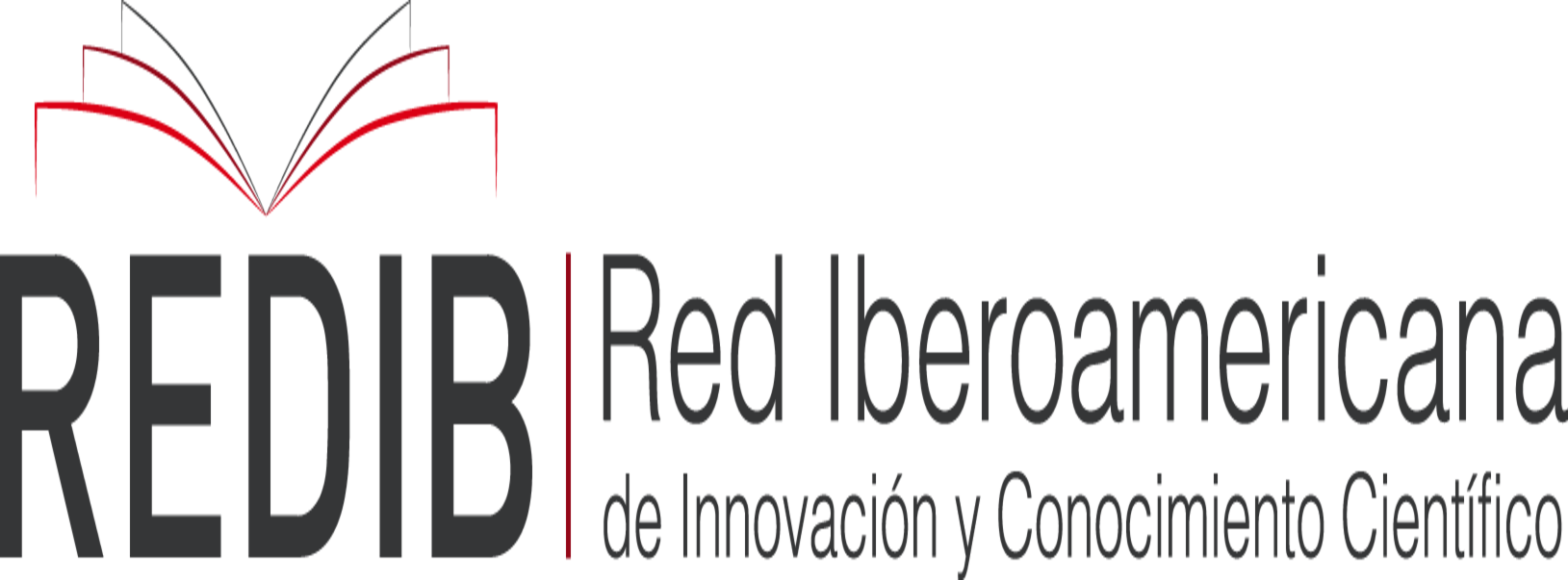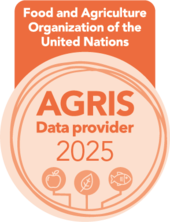¿Cuál es el rol de los fitobióticos en la producción animal?: Beneficios, biodisponibilidad, desafíos actuales y futuros
DOI:
https://doi.org/10.57188/manglar.2024.012Resumo
Cada vez más países van incorporando nuevas normativas de inocuidad, seguridad sanitaria y alimentaria, respondiendo a la progresiva preocupación por el uso de antibióticos promotores de crecimiento (APC) en producción animal; la comunidad científica se ha visto obligado a buscar nuevas alternativas que reduzcan o sustituyan el uso de APC, con la capacidad de salvaguardar la salud pública. Dentro de esas alternativas, los fitobióticos son considerados una opción muy prometedora, ya que son sustancias naturales constituidas por complejos compuestos bioactivos. Este documento revisa las distintas aplicaciones y la funcionalidad de los fitobióticos en la producción animal. En primer lugar, se manifiesta los principales efectos y mecanismo de acción, destacando y explicando su funcionalidad como antioxidantes, antiinflamatorios, antimicrobianos, promotores de crecimiento, mejoradores de las características organolépticas de los alimentos y reductores de la generación de gases causantes del efecto invernadero, Segundo, se revisan aplicaciones destacadas de los fitobióticos a las distintas especies de interés zootécnico y su efecto que estos tienen. Finalmente, se indaga su biodisponibilidad y los desafíos actuales y futuros de los fitobióticos.
Downloads
Referências
Aarestrup, F. M., & Wegener, H. C. (1999). The effects of antibiotic usage in food animals on the development of antimicrobial resistance of importance for humans in Campylobacter and Escherichia coli. Microbes and Infection, 1(8), 639-644. https://doi.org/10.1016/S1286-4579(99)80064-1
Abd-elaziz, R. A., Shukry, M., Abdel-Latif, H. M. R., & Saleh, R. M. (2023). Growth-promoting and immunostimulatory effects of phytobiotics as dietary supplements for Pangasianodon hypophthalmus fingerlings. Fish & Shellfish Immunology, 133, 108531. https://doi.org/10.1016/j.fsi.2023.108531
Adeli, A., Shamloofar, M., & Akrami, R. (2021). Dietary effect of Lemon Verbena ( Aloysia triphylla ) extract on growth performance, some haematological, biochemical, and non-specific immunity and stocking density challenge of rainbow trout juveniles (Oncorhynchus mykiss). Journal of Applied Animal Research, 49(1), 382-390. https://doi.org/10.1080/09712119.2021.1990069
Alagawany, M., Ashour, E. A., & Reda, F. M. (2016). Effect of Dietary Supplementation of Garlic (Allium Sativum) and Turmeric (Curcuma Longa) on Growth Performance, Carcass Traits, Blood Profile and Oxidative Status in Growing Rabbits. Annals of Animal Science, 16(2), 489-505. https://doi.org/10.1515/AOAS-2015-0079
Alghirani, M. M., Chung, E. L. T., Kassim, N. A., Ong, Y. L., Jesse, F. F. A., Sazili, A. Q., & Loh, T. C. (2022). Effect of Brachiaria decumbens as a novel supplementation on the production performance of broiler chickens. Tropical Animal Health and Production, 54(6), 1-14. https://doi.org/10.1007/S11250-022-03384-4/METRICS
Alkindi, F. F., Yulia, R., Herawati, F., & Jaelani, A. K. (2019). Influence of historical use of antibiotics toward antibiotic resistance. Farmasains : Jurnal Farmasi dan Ilmu Kesehatan, 4(1), 9. https://doi.org/10.22219/FARMASAINS.V4I1.7901
Alvarado, T. D., Elghandour, M. M. M. Y., Ekanem, N. J., Alcala-Canto, Y., Velázquez, A. E., Pacheco, E. B. F., Purba, R. A. P., & Salem, A. Z. M. (2022). Influence of Azadirachta indica and Cnidoscolus angustidens Dietary Extracts on Equine Fecal Greenhouse Gas Emissions. Journal of Equine Veterinary Science, 116, 104049. https://doi.org/10.1016/j.jevs.2022.104049
Alves, V. V., Arantes, L. C. R. V., de Barros Moreira Filho, A. L., da Silva Teixeira, M., da Silva, E. F. A., de Mesquita Souza Saraiva, M., de Lucena, R. B., Givisiez, P. E. N., de Oliveira, C. J. B., & de Freitas Neto, O. C. (2022). Effect of diets containing commercial bioactive compounds on Salmonella Heidelberg infection in broiler chicks. Brazilian Journal of Microbiology, 54(1), 571-577. https://doi.org/10.1007/S42770-022-00899-8
Antonelli, A., Fry, C., Smith, R., Simmonds, M., Kersey, P., Pritchard, H., Abbo, M., Acedo, C., Adams, J., Ainsworth, A., Allkin, B., Annecke, W., Bachman, S., Bacon, K., Bárrios, S., Barstow, C., Battison, A., Bell, E., Bensusan, K., & Zhang, B. (2023). State of the World’s Plants and Fungi 2023. Royal Botanic Gardens, Kew. https://www.kew.org/science/state-of-the-worlds-plants-and-fungi
Ayala, D., Peralvo Vidal, J., Madril, K., & Burgos Mayorga, A. (2022). Suplementos alimenticios en porcicultura como alternativa a los antibióticos. AlfaPublicaciones, 4(3), 39-65. https://doi.org/10.33262/ap.v4i3.222
Ayala, Silvana, N., Zocarrato, I., & Sarai. (2011). Uso de orégano vulgar (Origanum vulgare) como fitobiótico en el engorde de conejos. Cuban Journal of Agricultural Science, 45(2). https://cjascience.com/index.php/CJAS/article/view/136
Bamidele, O., Yakubu, A., Joseph, E. B., & Amole, T. A. (2022). Antibiotic Resistance of Bacterial Isolates from Smallholder Poultry Droppings in the Guinea Savanna Zone of Nigeria. Antibiotics, 11(7), 973. https://doi.org/10.3390/antibiotics11070973
Bastos, A. J., Valdiviezo, M. J., Silva, C. A., Ana, P., & Rodrigues, L. B. F. (2021). O outro lado dos ácidos orgânicos e fitogênicos. Pubvet, 15(06), 1-8. https://doi.org/10.31533/PUBVET.V15N06A837.1-8
Bava, R., Castagna, F., Lupia, C., Ruga, S., Conforti, F., Marrelli, M., Argentieri, M. P., Musella, V., Britti, D., Statti, G., Statti, G., & Palma, E. (2024). Phytochemical Composition and Pharmacological Efficacy Evaluation of Calamintha nepeta, Calamintha sylvatica, Lavandula austroapennina and Mentha piperita Essential Oils for the Control of Honeybee (Apis mellifera) Varroosis. Animals, 14(1). https://doi.org/10.3390/ani14010069
Bhattacharya Sujata, J. K., & Puri, S. (2018). Plant growth regulator mediated consequences of secondary metabolites in medicinal plants. Journal of Applied Research on Medicinal and Aromatic Plants, 9, 26–38. https://doi.org/10.1016/j.jarmap.2017.12.003
Buenaño, H. C. X., & Sánchez, L. R. B. (2022). Uso del jengibre (Zinger officinale) y cúrcuma (Curcuma longa) como aditivos fitobioticos en lechones posdestete. Revista Arbitrada Interdisciplinaria Koinonía, 7(14), 32-43. https://doi.org/10.35381/r.k.v7i14.1853
Caicedo, W., Margoth Chinque Deisy, & Jimena Grefa Vanessa. (2022). Aditivos fitobióticos y su efecto en el comportamiento productivo de los cerdos. Revista Cubana de Ciencias Agropecuarias, 56(2).
Chaimanee, V., Kasem, A., Nuanjohn, T., Boonmee, T., Siangsuepchart, A., Malaithong, W., Sinpoo, C., Disayathanoowat, T., & Pettis, J. S. (2021). Natural extracts as potential control agents for Nosema ceranae infection in honeybees, Apis mellifera. Journal of Invertebrate Pathology, 186, 107688. https://doi.org/10.1016/j.jip.2021.107688
Chodkowska, K. A., Barszcz, M., & Tuśnio, A. (2024). MicroRNA expression and oxidative stress markers in pectoral muscle of broiler chickens fed diets supplemented with phytobiotics composition. Scientific Reports, 14(1). https://doi.org/10.1038/s41598-024-54915-y
Costa, L. B., Berenchtein, B., Almeida, V. V., Tse, M. L. P., Braz, D. B., Andrade, C., Mourão, G. B., & Miyada, V. S. (2011). Aditivos fitogênicos e butirato de sódio como promotores de crescimento de leitões desmamados. Archivos de Zootecnia, 60(231), 687-698. https://doi.org/10.4321/S0004-05922011000300056
Cunha Pereira, R., Faria Barbosa, W., Pereira Lima, M. A., Vieira, J. O. L., Carvalho Guedes, R. N., Rodrigues da Silva, B. K., Dias Barbosa, G. M., & Lemes Fernandes, F. (2020). Toxicity of botanical extracts and their main constituents on the bees Partamona helleri and Apis mellifera. Ecotoxicology, 29(3), 246-257. https://doi.org/10.1007/s10646-020-02167-7
Damaziak, K., Riedel, J., Gozdowski, D., Niemiec, J., Siennicka, A., & Róg, D. (2017). Productive performance and egg quality of laying hens fed diets supplemented with garlic and onion extracts. Journal of Applied Poultry Research, 26(3), 337-349. https://doi.org/10.3382/japr/pfx001
Dehau, T., Cherlet, M., Croubels, S., van Immerseel, F., & Goossens, E. (2023). A High Dose of Dietary Berberine Improves Gut Wall Morphology, Despite an Expansion of Enterobacteriaceae and a Reduction in Beneficial Microbiota in Broiler Chickens. mSystems, 8(1). https://doi.org/10.1128/msystems.01239-22
Deminicis, R. G. da S., Meneghetti, C., Oliveira, E. B. de, Garcia Júnior, A. A. P., Farias Filho, R. V., & Deminicis, B. B. (2021). Systematic review of the use of phytobiotics in broiler nutrition. Revista de Ciências Agroveterinárias, 20(1), 098-106. https://doi.org/10.5965/223811712012021098
Djoumessi, G. F. T., Tendonkeng, F., Miégoué, E., Camara, S., Fokom Wauffo, D., Emalé, C., & Pamo, T. E. (2020). Effect of different levels of curcuma longa powder in the diet on reproductive and growth performance of Guinea pigs. Livestock Research for Rural Development, 32(6). https://lrrd.cipav.org.co/lrrd32/6/ftend32088.html
Djoumessi, G. F. T., Tendonkeng, F., Miegoue, E., Emale, C., Wauffo, D. F., & Hornick, J. L. (2021). Effects of graded levels of Curcuma longa Powder on in vivo digestibility in Guinea pigs (Cavia porcellus). Tropicultura, 39(3), 1-11. https://doi.org/10.25518/2295-8010.1847
Djuissi, N. M., Ngoula, F., Kouamo, J., Vemo, N. B., Nono, M. F. S., Lontio, A. F., Tchoffo, H., & Dongmo, A. N. (2021). Reproductive Characteristics, Serum Metabolites, and Oxidative Status in Female Guinea Pigs (Cavia porcellus) Fed with Ethanolic Extract of Dichrostachys glomerata Fruit. World’s Veterinary Journal, 11(1), 66-72. https://doi.org/10.54203/scil.2021.wvj9
Espinosa, C. D., & Stein, H. H. (2021). Digestibility and metabolism of copper in diets for pigs and influence of dietary copper on growth performance, intestinal health, and overall immune status: a review. Journal of Animal Science and Biotechnology 2021 12:1, 12(1), 1-12. https://doi.org/10.1186/S40104-020-00533-3
Fathima, S., Shanmugasundaram, R., Adams, D., & Selvaraj, R. K. (2022). Gastrointestinal Microbiota and Their Manipulation for Improved Growth and Performance in Chickens. Foods, 11(10), 1401. https://doi.org/10.3390/FOODS11101401
Ferreira, J. R. de M., Ferraz, P. A., da Silva, A. H., Pugliesi, G., & Gobesso, A. A. de O. (2023). Macleaya cordata extract phytogenic additive: A safe alternative for horses that influences intestinal wall thickness. Livestock Science, 275, 105290. https://doi.org/10.1016/j.livsci.2023.105290
Food and Agriculture Organization of the United Nations (FAO). (2021). OECD-FAO Agricultural Outlook 2021-2030. OECD. https://doi.org/10.1787/19428846-en
Gao, C., Qi, M., & Zhou, Y. (2024). Chestnut tannin extract modulates growth performance and fatty acid composition in finishing Tan lambs by regulating blood antioxidant capacity, rumen fermentation, and biohydrogenation. BMC Veterinary Research, 20(1). https://doi.org/10.1186/s12917-023-03870-3
Gao, J., Cheng, B. B., Liu, Y. F., Li, M. M., & Zhao, G. Y. (2022). Effects of red cabbage extract rich in anthocyanins on rumen fermentation, rumen bacterial community, nutrient digestion, and plasma indices in beef bulls. animal, 16(5), 100510. https://doi.org/10.1016/j.animal.2022.100510
Gara, L., Orsin, F., Nicoletti, I., & Corradini, D. (2018). Aspectos Fundamentales y Prácticos de la Cromatografía Líquida y Técnicas de Electromigración Capilar para el Análisis de Compuestos Fenólicos en Plantas y Alimentos Derivados de Plantas, Parte 1: Cromatografía Líquida. LCGC Europa, 31(9), 480-490.
Gessner, D. K., Ringseis, R., & Eder, K. (2017). Potential of plant polyphenols to combat oxidative stress and inflammatory processes in farm animals. Journal of Animal Physiology and Animal Nutrition, 101(4), 605-628. https://doi.org/10.1111/jpn.12579
Hidanah, S., Sabdoningrum, E. K., Al Arif, M. A., Ansori, A. N. M., Hasanah, T. P., & Widaya, L. V. A. (2020). Sambiloto (Andrographis paniculata) Extract Improves the Performance of Animal Model Infected with Escherichia coli. Indian Journal of Forensic Medicine & Toxicology. 14(4) 3491-3496, https://doi.org/10.37506/ijfmt.v14i4.12167
Honorio-Javes, C. E., Vallenas-Sánchez, Y., Bazán Pérez, J. T., Antenor Orrego Trujillo, P., Av América Sur, P., & Monserrate, urb. (2021). Coctel de bacteriófagos como sustituto de promotores de crecimiento tipo antibiótico en avicultura. Scientia Agropecuaria, 12(4), 499-508. https://doi.org/10.17268/sci.agropecu.2021.054
Hu, N.-X., Chen, M., Liu, Y.-S., Shi, Q., Yang, B., Zhang, H.-C., Cheng, P., Tang, Q., Liu, Z.-Y., & Zeng, J.-G. (2019). Pharmacokinetics of sanguinarine, chelerythrine, and their metabolites in broiler chickens following oral and intravenous administration. Journal of Veterinary Pharmacology and Therapeutics, 42(2), 197-206. https://doi.org/10.1111/jvp.12729
Indrati, R., & Titisari, N. (2020). The Effectiveness of Phytopharmaca of Ethanol Extract Sambiloto Leaf as an Alternative of Control to Coccidiosis. IOP Conference Series: Earth and Environmental Science, 478(1), 012083. https://doi.org/10.1088/1755-1315/478/1/012083
Jahja, E. J., Yuliana, R., Simanjuntak, W. T., Fitriya, N., Rahmawati, A., & Yulinah, E. (2023). Potency of Origanum vulgare and Andrographis paniculata extracts on growth performance in poultry. Veterinary and Animal Science, 19, 100274. https://doi.org/10.1016/j.vas.2022.100274
Jiwuba, P. D. C., & Kadurumba, O. E. (2019). Nutritional and phytogenic properties of pawpaw (Carica papaya) leaf meal on blood characteristics of growing rabbits. Acta Fytotechnica et Zootechnica, 22(2), 46-51. https://doi.org/10.15414/AFZ.2019.22.02.46-51
Juhász, Á., Molnár-Nagy, V., Bata, Z., Tso, K. H., Mayer, Z., & Posta, K. (2022). Alternative to ZnO to establish balanced intestinal microbiota for weaning piglets. PLoS ONE, 17(3). https://doi.org/10.1371/JOURNAL.PONE.0265573
Kikusato, M. (2021). Phytobiotics to improve health and production of broiler chickens: functions beyond the antioxidant activity. Animal Bioscience, 34(3), 345-353. https://doi.org/10.5713/ab.20.0842
Kimminau, E. A., Karnezos, T. P., Ko, H., Fasina, Y., & Kim, W. K. (2023). Phytogenic blend administered through water impacts Salmonella infection in broiler chickens. Journal of Applied Poultry Research, 32(1), 100320. https://doi.org/10.1016/J.JAPR.2022.100320
Kosari, G., Norouzian, M. A., Khorrami, B., & Najafi, A. (2024). Effects of dietary basil (Ocimum basilicum) supplementation on reproductive hormones, semen parameters, and testicular development in Zandi male lambs. Veterinary and Animal Science, 23. https://doi.org/10.1016/j.vas.2024.100338
Lee, M. T., Lin, W. C., Yu, B., & Lee, T. T. (2016). Antioxidant capacity of phytochemicals and their potential effects on oxidative status in animals — A review. Asian-Australasian Journal of Animal Sciences, 30(3), 299-308. https://doi.org/10.5713/ajas.16.0438
Leonor, L., López, A., Yadmila, L., Gala, D., Michell, L., Tabío, T., Sheyla Fernández, L., & Ii, P. (2017). Los enzibióticos como alternativa terapéutica contra las enfermedades bacterianas. MEDISAN, 21(10), 3077-3083. http://scielo.sld.cu/scielo.php?script=sci_arttext&pid=S1029-30192017001000012&lng=es&nrm=iso&tlng=es
Leparmarai, P. T., Sinz, S., Kunz, C., Liesegang, A., Ortmann, S., Kreuzer, M., & Marquardt, S. (2019). Transfer of total phenols from a grapeseed-supplemented diet to dairy sheep and goat milk, and effects on performance and milk quality1. Journal of Animal Science, 97(4), 1840-1851. https://doi.org/10.1093/jas/skz046
Liebl, M., Gierus, M., Rocchi, E., Potthast, C., & Schedle, K. (2022). Effects of energy reduced diets including alternative protein sources and a phytogenic supplement on performance, carcass traits and digestibility in broiler chickens. Journal of Applied Poultry Research, 31(3), 100265. https://doi.org/10.1016/J.JAPR.2022.100265
Liu, E.-H., Qi, L.-W., & Li, P. (2010). Structural Relationship and Binding Mechanisms of Five Flavonoids with Bovine Serum Albumin. Molecules, 15(12), 9092-9103. https://doi.org/10.3390/molecules15129092
Liu, Z., Lei, X., Li, J., Zhong, Y., Tan, D., Zhang, Q., & Kong, Z. (2023). Effects of fermented Andrographis paniculata on growth performance, carcass traits, immune function, and intestinal health in Muscovy ducks. Poultry Science, 102(3), 102461. https://doi.org/10.1016/j.psj.2022.102461
Manach, C., Scalbert, A., Morand, C., Rémésy, C., & Jiménez, L. (2004). Polyphenols: food sources and bioavailability. The American Journal of Clinical Nutrition, 79(5), 727-747. https://doi.org/10.1093/ajcn/79.5.727
Medeiros, F. J. R., Mello Cerbaro, A. E., Bastos, F. L., Pereira, R. A., Duarte, M. A., Araújo Júnior, Â. M. C., da Silva, A. H., & de Oliveira Gobesso, A. A. (2023). Effects of Macleaya cordata extract supplementation on digestive parameters of ponies. Archives of Animal Nutrition, 77(2), 110-120. https://doi.org/10.1080/1745039X.2023.2187198
Mehdi, Y., Létourneau-Montminy, M. P., Gaucher, M. Lou, Chorfi, Y., Suresh, G., Rouissi, T., Brar, S. K., Côté, C., Ramirez, A. A., & Godbout, S. (2018). Use of antibiotics in broiler production: Global impacts and alternatives. Animal Nutrition, 4(2), 170-178. https://doi.org/10.1016/J.ANINU.2018.03.002
Miranda, V. M. de M. C., Silva, L. A. L. da, Leite, S. M., Ribeiro, B. L., Batista, P. R., Silva, E. M. T. T. da, & Castilha, L. D. (2021). Phytogenic compounds and bioactive substances for rabbits: benefits on reproduction, well-being and meat quality. Research, Society and Development, 10(12), e306101220103–e306101220103. https://doi.org/10.33448/RSD-V10I12.20103
Moreira, V. dos S., Garbossa, C. A. P., Guimarães, E. B. B., Hirai, W. Y., da Cruz, T. A., Alves, L. K. S., & Araujo, L. F. (2022). Evaluation of a Phytogenic Compound with Minerals as a Possible Alternative to Ractopamine for Finishing Pigs. Animals 12(18), 2311. https://doi.org/10.3390/ANI12182311
Oktavia, A. I., Batoro, J., & Indriyani, S. (2017). Phytochemical and Histochemical Screening of Toxic Plant Based on Knowledge of Tengger Tribe in Ngadiwono Village, Pasuruan. The Journal of Experimental Life Sciences, 7(1), 50-54. https://doi.org/10.21776/ub.jels.2016.007.01.10
Pandey, A. K., Kumar, P., & Saxena, M. J. (2019). Feed Additives in Animal Health. Nutraceuticals in Veterinary Medicine, 345-362. https://doi.org/10.1007/978-3-030-04624-8_23
Pandit, J., Aqil, Mohd., & Sultana, Y. (2016). Nanoencapsulation technology to control release and enhance bioactivity of essential oils. En Encapsulation.12(1) 597-640. https://doi.org/10.1016/B978-0-12-804307-3.00014-4
Papatsiros, V. G., Katsogiannou, E. G., Papakonstantinou, G. I., Michel, A., Petrotos, K., & Athanasiou, L. V. (2022). Effects of Phenolic Phytogenic Feed Additives on Certain Oxidative Damage Biomarkers and the Performance of Primiparous Sows Exposed to Heat Stress under Field Conditions. Antioxidants, 11(3), 593. https://doi.org/10.3390/ANTIOX11030593/S1
Petnual, P., Sangvanich, P., & Karnchanatat, A. (2010). A lectin from the rhizomes of turmeric (Curcuma longa L.) and its antifungal, antibacterial, and α-glucosidase inhibitory activities. Food Science and Biotechnology, 19(4), 907-916. https://doi.org/10.1007/s10068-010-0128-5
Potrich, M., Silva, R. T. L. da, Maciel, R. M. A., Costa-Maia, F. M., Lozano, E. R., Rossi, R. M., Martins, J. R., & Dallacort, S. (2020). Are plant extracts safe for honey bees ( Apis mellifera) ? Journal of Apicultural Research, 59(5), 844-851. https://doi.org/10.1080/00218839.2020.1735733
Rabee, A. E., Mohamed M. Ghandour, M., Sallam, A., Elwakeel, E. A., Mohammed, R. S., Sabra, E. A., Abdel-Wahed, A. M., Mourad, D. M., Hamed, A. A., & Hafez, O. R. (2024). Rumen fermentation and microbiota in Shami goats fed on condensed tannins or herbal mixture. BMC Veterinary Research, 20(1). https://doi.org/10.1186/s12917-024-03887-2
Rafeeq, M., Bilal, R. M., Alagawany, M., Batool, F., Yameen, K., Farag, M. R., Ali, S., Elnesr, S. S., & El-Shall, N. A. (2022). The use of some herbal plants as effective alternatives to antibiotic growth enhancers in poultry nutrition. World’s Poultry Science Journal, 78(4), 1067–1085. https://doi.org/10.1080/00439339.2022.2108362
Rosabal, N. O., Martínez, A. Y., Rodríguez, B. R., Pupo Torres, G., Olmo, G. C., & Más, T. D. (2017). Efecto de la suplementación dietética del polvo de hojas de Anacardium occidentale L. (marañón) en la producción y calidad del huevo de gallinas ponedoras. Revista Cubana de Plantas Medicinales, 22(1), 0-0.
Rosales-López, C., Arnáez-Serrano, E., Moreira- González, I., Garro-Monge, G., Agüero-Hernández, A. L., Jiménez-Quesada, K., Abdelnour-Esquivel, A., & Calvo-Castro, L. (2019). Investigaciones en plantas con potencial bioactivo. Revista Tecnología en Marcha, 32(9), 12–21. https://doi.org/10.18845/tm.v32i9.4621
Rupasinghe, H. V., Ronalds, C. M., Rathgeber, B., & Robinson, R. A. (2010). Absorption and tissue distribution of dietary quercetin and quercetin glycosides of apple skin in broiler chickens. Journal of the Science of Food and Agriculture, 90(7), 1172-1178. https://doi.org/10.1002/jsfa.3944
Salem, A. Z. M., Elghandour, M. M. Y., Kholif, A. E., López, S., Pliego, A. B., Cipriano-Salazar, M., Chagoyán, J. C. V., de Oca Jiménez, R. M., & Alonso, M. U. (2017). Tree leaves of Salix babylonica extract as a natural anthelmintic for small-ruminant farms in a semiarid region in Mexico. Agroforestry Systems, 91(1), 111-122. https://doi.org/10.1007/s10457-016-9909-z
Samantaray, L., & Nayak, Y. (2022a). Influence of Phytobiotic Essential Oils on Growth Performance and Hematological Parameters of Broiler Chickens. Advances in Animal and Veterinary Sciences, 10(6), 1189-1422 https://doi.org/10.17582/journal.aavs/2022/10.6.1289.1295
Samantaray, L., & Nayak, Y. (2022b). The Influences of Black Pepper, Turmeric and Fennel Essential Oils Supplementation in Feed on Egg Quality Characteristics of Layers. Journal of Animal Health and Production, 10(4). https://doi.org/10.17582/journal.jahp/2022/10.4.522.528
Sánchez-Torres, M. T., Cordero-Mora, J. L., Martinez-Aispuro, J. alfredo, Mendoza- Martínez, G. D., Ayala-Monter, M. A., Vázquez-Silva, G., Hernández-García, P. A., & Figueroa-Velasco, J. L. (2022). Adición de un fitogénico poliherbal en dietas de corderos de engorda. Ecosistemas y Recursos Agropecuarios, 9(2). https://doi.org/10.19136/era.a9n2.3125
Sergey, R.M; Gennadyevna, K; Roman, A. V; y Ulrikh V. E. (2019). Efecto de los aditivos fitobióticos para piensos a base de extracto de agua-etanol de Echinacea Purpurea sobre las características cualitativas de la carne de conejo. Journal of Advanced Pharmacy Education and Research, 9(5). https://japer.in/article/effect-of-phytobiotic-fodder-additives-based-on-water-ethanol-extract-of-echinacea-purpurea-on-the-qualitative-characteristics-of-rabbit-meat
Šťastník, O., Novotný, J., Roztočilová, A., Zálešáková, D., Řiháček, M., Horáková, L., Pluháčková, H., Pavlata, L., & Mrkvicová, E. (2022). Caraway (Carum carvi L.) in fast-growing and slow-growing broiler chickens’ diets and its effect on performance, digestive tract morphology and blood biochemical profile. Poultry Science, 101(9), 101980. https://doi.org/10.1016/j.psj.2022.101980
Torrecilhas, J. A., Ornaghi, M. G., Passetti, R. A. C., Mottin, C., Guerrero, A., Ramos, T. R., Vital, A. C. P., Sañudo, C., Malheiros, E. B., & Prado, I. N. do. (2021). Meat quality of young bulls finished in a feedlot and supplemented with clove or cinnamon essential oils. Meat Science, 174, 108412. https://doi.org/10.1016/j.meatsci.2020.108412
Tresia, G. E., & Pasaribu, T. (2024). Evaluación de canales y órganos viscerales de pollos de engorde infectados con Eimeria tenella con suplementación en polvo de Lerak (Sapindus rarak). Actas de La Conferencia AIP, 3055, 070011. https://doi.org/10.1063/5.0184116
Valenzuela-Grijalva, N. V., Pinelli-Saavedra, A., Muhlia-Almazan, A., Domínguez-Díaz, D., & González-Ríos, H. (2017). Dietary inclusion effects of phytochemicals as growth promoters in animal production. Journal of Animal Science and Technology, 59(1), 8. https://doi.org/10.1186/s40781-017-0133-9
Voroshilin, R. A., Kurbanova, M. G., Rassolov, S. N., & Ulrikh, E. V. (2020). Rabbit dietary supplementation with echinacea purpurea l.: The quality profile of rabbit meat. Food Processing: Techniques and Technology, 50(2), 185-193. https://doi.org/10.21603/2074-9414-2020-2-185-193
Wen, Gu, Tao, Cheng, Wang, & Zhou. (2019). Effects of Ginger Extract on Laying Performance, Egg Quality, and Antioxidant Status of Laying Hens. Animals, 9(11), 857. https://doi.org/10.3390/ani9110857
Wigraiboon, S., Panchan, R., Luang-In, V., Ounjit, W., Panase, P., Sookying, S., & Sutthi, N. (2024). Effects of Dietary Tuber Ethanolic Extract of Nut Grass (Cyperus rotundus Linn.) on Growth, Immune Response, and Disease Resistance in Nile Tilapia (Oreochromis niloticus). Animals, 14(3). https://doi.org/10.3390/ani14030503
Yesuf, Y. K., Tamir, B., Tesfaye, E., & Beyero, N. (2023). The synergetic effects of some phytobiotics mix on growth, hematology and microbial loads of broiler chickens. Animal Biotechnology, 34(8), 1-7. https://doi.org/10.1080/10495398.2023.2165934
Yu, S. J., Bajagai, Y. S., Petranyi, F., & Stanley, D. (2022). Phytogen Improves Performance during Spotty Liver Disease by Impeding Bacterial Metabolism and Pathogenicity. Applied and Environmental Microbiology, 88(18).
Yunianto, V. D., Sukamto, B., Sugiharto, S., & Hidayat, R. ahmad. (2021). Effect of dietary supplementation of probiotic, phytobiotics or their combination on performance, blood indices and jejunal morphology of laying hens during post peak production. Online Journal of Animal and Feed Research, 11(1), 08-12. https://doi.org/10.51227/ojafr.2021.2
Downloads
Publicado
Edição
Secção
Licença
Direitos de Autor (c) 2024 Fredy Pajuelo Risco, Daniel Castro Salinas, Cesar Honorio Javes, Juan Hernández Valdez, Ramiro Juan Vega-González

Este trabalho encontra-se publicado com a Licença Internacional Creative Commons Atribuição 4.0.

Manglar is an open access journal distributed under the terms and conditions of Creative Commons Attribution 4.0 International license









